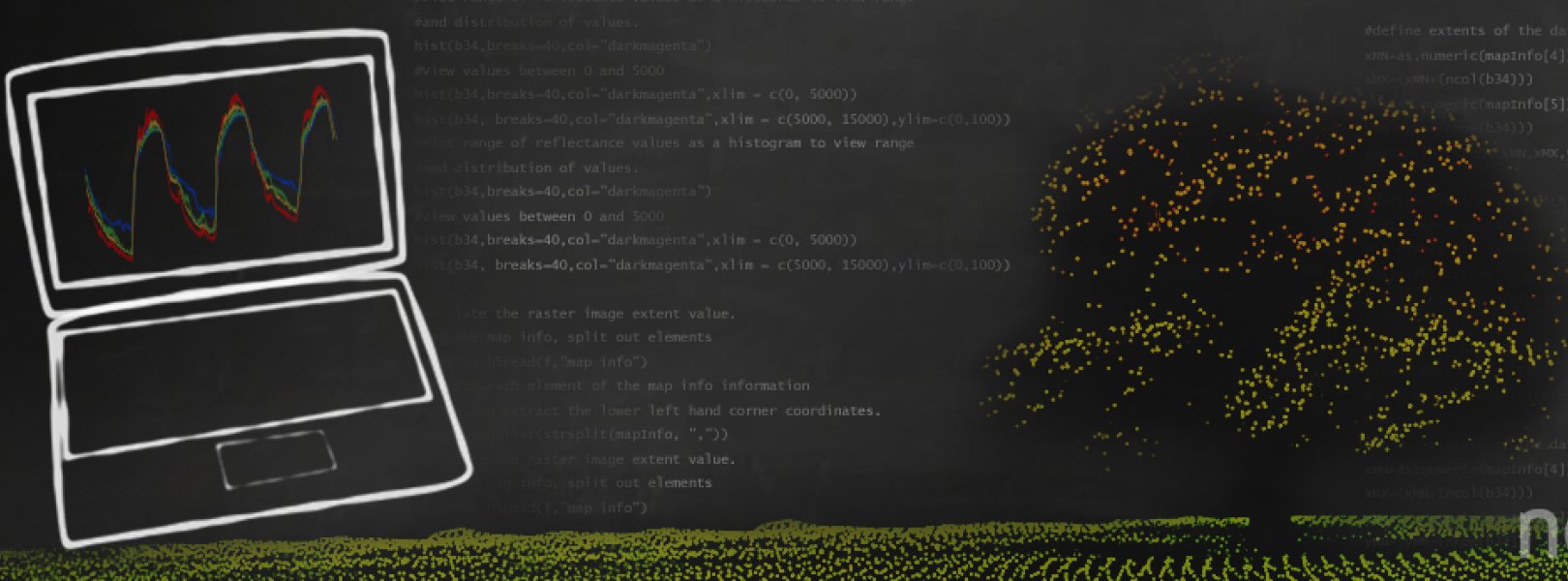Tutorials

Looking to improve your data skills using tools like R or Python? Want to learn more about working with a specific NEON data product? NEON develops online tutorials to help you improve your research. These self-paced tutorials are designed for you to used as standalone help on a single topic or as a series to learn new techniques.
Code for most script based tutorials can be downloaded at the end of the tutorial. Source files can also be found on GitHub. If you are interested in contributing a tutorial to this collection, please reach out using the Contact Us form, and we can guide you through the process of submitting resources to the GitHub repository.
All materials are freely available for you to use and reuse. We suggest the following citation for tutorials: [AUTHOR(S), NEON (National Ecological Observatory Network)]. Data Tutorial: [TUTORIAL NAME]. [URL] (accessed [DATE OF ACCESS]). See Citation Guidelines for examples, and for guidance in citing data and code.
Tutorials
Linking NEON aquatic observational and instrument data to answer critical questions in aquatic ecology at the continental scale
|
Mask Rasters Using Thresholds in Python
|
Merging AOP L3 Tiles in R into Full-Site Rasters
|
NDVI Time Series using AOP Reflectance and Landsat 8 Data in GEE
|
NEON AOP Hyperspectral Data in HDF5 format with Python
|
NEON Data Access via BigQuery: A Pilot Project
|
NEON Domain and Site Shapefiles and Maps
|
Plas.io: Free Online Data Viz to Explore LiDAR Data
|
Plot a Spectral Signature from Reflectance Data in Python
|
Plot a Spectral Signature in Python - Tiled Data
|
Plot Continuous & Discrete Data Together
|
Plot NEON RGB Camera Imagery in Python
|
Plot Spectral Signatures Derived from Hyperspectral Remote Sensing Data in HDF5 Format in R
|
Plot spectral signatures of AOP Reflectance data in GEE
|
Plotting and Clustering Megapit Soils Data
|
Primer on Raster Data in R
|
Principal Component Analysis of AOP Hyperspectral Data in GEE
|
Publish Code - From R Markdown to HTML with knitr
|
Quantifying The Drivers and Impacts of Natural Disturbance Events – The 2013 Colorado Floods
|
Random Forest Species Classification using AOP and TOS data in GEE
|
Raster 00: Intro to Raster Data in R
|
Raster 01: Plot Raster Data in R
|
Raster 04: Work With Multi-Band Rasters - Image Data in R
|
Raster Data in R - The Basics
|
Read in and visualize hyperspectral data in Python using functions
|
Reflectance pre-processing: masking out bad weather data in GEE
|
Relating Reflectance Indices to Flux Data
|
Resources for Learning R
|
Select pixels and compare spectral signatures in R
|
Set up GitHub Working Directory - Quick Intro to Bash
|